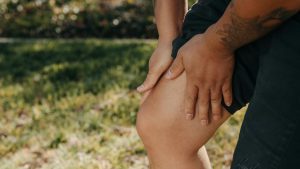
Four years ago, I came to see you because of advanced knee osteoarthritis. At that time, you gave me exercises and taught me how to do them. I must tell you that I have been exercising regularly, and generally, I haven’t had major issues since then. What I don’t understand is how it’s possible that I don’t feel pain immediately after exercising, or even a day or two after, but if I stop exercising for a few days, the pain comes back? How is it possible for the muscle to strengthen or weaken so quickly?
Although we colloquially define osteoarthritis as “cartilage wear and tear,” this expression is not accurate. As I have previously written on these pages, osteoarthritis is a complex disease that affects the entire joint, down to the bones. Pain, on the other hand, may or may not be directly related to cartilage damage. One or more different factors may be involved in its onset. As most patients with osteoarthritis know, pain can appear without clear cause, even though the process never stops, and just as it can appear without visible reason, it can also disappear, only to return after some time.
In your specific case, the pain is likely due to minor knee instability caused by osteoarthritis. With the “wearing down” and thinning of the cartilage cover, along with changes in the shape of the bones, the joint surfaces themselves come closer together. This means that the ligaments, which were once tight and passively stabilized the joint, are now loose and no longer perform that function. Loose joints are like untied shoelaces in a shoe you’re walking in. It will sooner or later start to chafe. This is exactly what happens in some patients with osteoarthritis. That instability becomes the main cause of pain. It’s easy to diagnose this based on the reaction to exercise. If there is improvement that lasts from a few hours to a few days, it is probably the described phenomenon. What exercises do is stabilize the joint through two mechanisms—increased muscle tone and stimulation of proprioceptive response.
With advanced osteoarthritis, we only have two options. Regular exercise, if it works, for as long as it works in relieving or sufficiently reducing pain, or joint replacement (arthroplasty).
